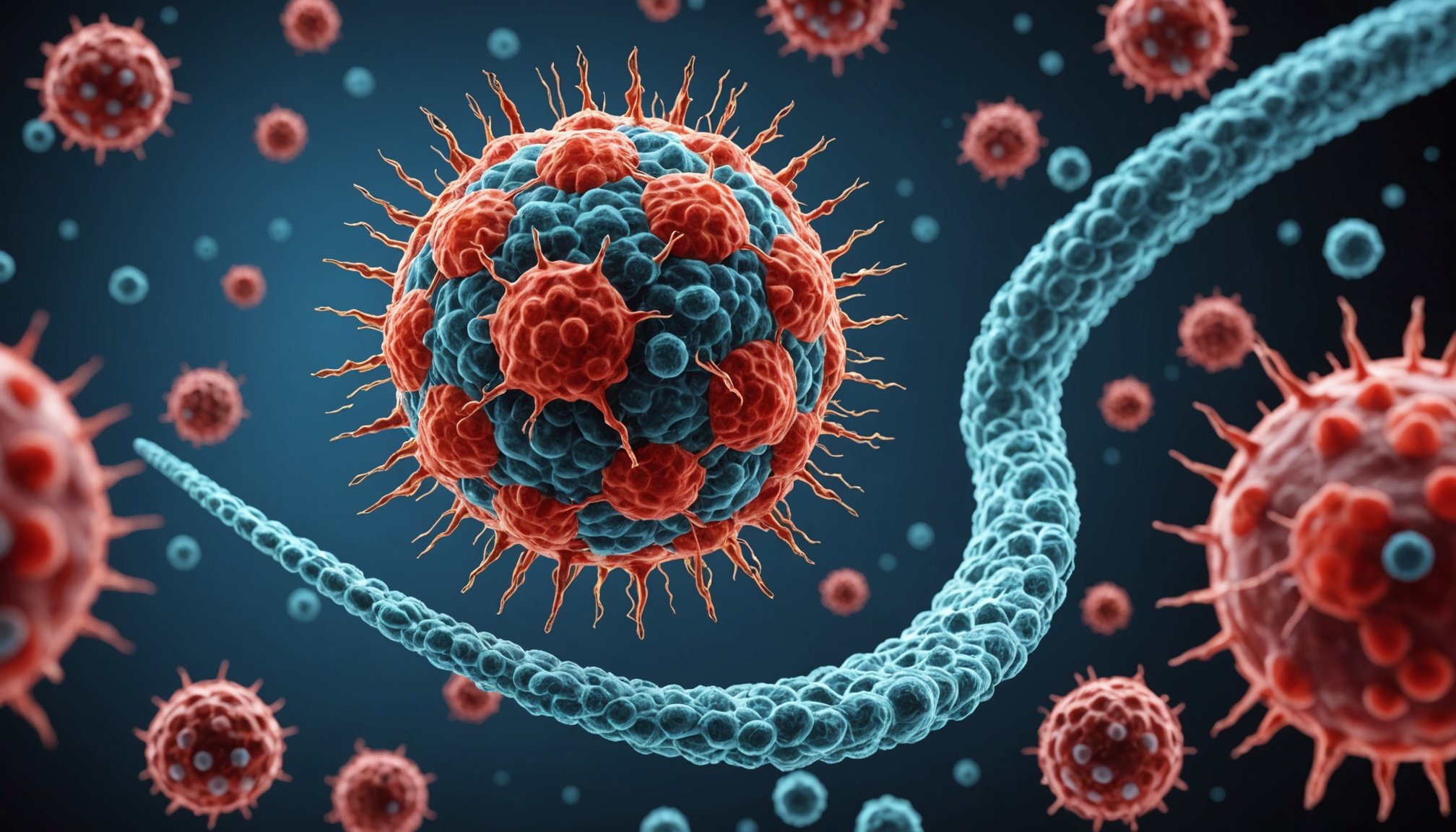Overview of Nanotechnology in Cancer Treatment
Nanotechnology represents a groundbreaking innovation in the field of oncology, offering promising possibilities for more efficient and targeted cancer treatment. At its core, nanotechnology involves the manipulation of matter on an atomic and molecular scale, which enables precise delivery of therapeutic agents directly to cancer cells. This precision reduces damage to healthy cells, thereby minimizing side effects.
The significance of nanotechnology in cancer treatment lies in its potential to transform existing therapeutic protocols. Historically, cancer treatment has relied heavily on surgery, radiation, and chemotherapy, which often posed severe side effects due to their non-specific nature. The evolution of these methods has seen incremental improvements, but nanotechnology presents a paradigm shift.
In parallel : Empowering tomorrow”s cyber defense: innovative strategies for ai-enhanced threat intelligence
The current state of research and development in nanotechnology is rapidly advancing. Researchers are exploring various applications, such as nanoparticles that can deliver drugs, heat, or light to destroy tumor cells without harming surrounding tissue. This innovation aims to enhance the efficacy of traditional treatments, potentially improving survival rates and quality of life for cancer patients. As such, nanotechnology stands at the forefront of modern cancer treatment, poised to bring significant advancements in the fight against cancer.
Mechanisms of Nanotechnology-Based Drug Delivery Systems
The revolutionary field of nanotechnology is transforming drug delivery systems by utilizing advanced mechanisms to improve targeted therapy. These systems are designed to enhance the effectiveness and precision of drug delivery, minimizing side effects and optimizing therapeutic outcomes.
In the same genre : Revolutionizing building management with iot: discover smarter, more efficient solutions
Types of Nanoparticles in Drug Delivery
Nanoparticles play a crucial role in nanotechnology-based drug delivery. Liposomes, dendrimers, and polymeric nanoparticles are among the most studied and widely used types. Liposomes, with their lipid bilayer structure, can encapsulate both hydrophilic and hydrophobic drugs, allowing for versatile delivery options. Dendrimers, characterized by their highly branched, tree-like structure, offer precise drug release and minimize non-specific interactions. Polymeric nanoparticles, using biodegradable and biocompatible materials, ensure controlled drug delivery and release.
Mechanisms of Targeted Drug Release
Targeted drug release mechanisms are vital for nanotechnology drug delivery systems. These mechanisms often rely on external stimuli such as pH, temperature, or magnetic fields to achieve biodistribution and targeted release at the specific site. By finely tuning these processes, drugs can be delivered directly to affected areas, reducing systemic exposure and enhancing therapeutic efficacy.
Advantages of Nanotechnology in Drug Delivery
Nanotechnology offers significant advantages over traditional methods. With improved biodistribution, enhanced permeability, and retention effect, nanotechnology ensures better targeting, which translates to increased efficacy and reduced toxicity compared to traditional drug delivery systems. Liposomes, dendrimers, and polymeric nanoparticles are crucial in achieving these benefits.
Notable Breakthroughs in Nanotechnology Research
In recent years, nanotechnology breakthroughs have revolutionized the medical field. Researchers have conducted pivotal case studies illustrating its efficacy in various treatments. One notable study showcased the use of nanoparticles in cancer therapy. These tiny particles can target cancer cells with high precision, minimizing damage to surrounding healthy tissues. Such breakthroughs exemplify the potential to improve patient outcomes significantly.
Clinical trials leveraging nanotechnology have also yielded promising results. For instance, trials involving nanocarriers for drug delivery in chemotherapy have demonstrated a reduction in side effects. This approach allows for the precise release of medication directly into tumor sites. Patients participating in these trials reported fewer adverse reactions compared to conventional treatments, highlighting the practical benefits of these advancements.
The impact of these breakthroughs in nanotechnology is far-reaching. They offer new possibilities for challenging medical conditions. Patients experience improved quality of life due to more effective and targeted therapies. As research continues, the incorporation of nanotechnology in medical treatments is expected to expand, paving the way for innovative solutions and enhanced healthcare outcomes.
Challenges and Limitations of Current Nanotechnology Approaches
Exploring the challenges associated with nanotechnology reveals a complex landscape. The technical intricacies of manipulating materials at the atomic level present significant obstacles. Precision in design and function can be difficult, often leading to inconsistencies. Regulation also poses a challenge, as existing frameworks struggle to keep up with the rapid pace of nano advancements. Without comprehensive guidelines, implementation is hindered, as it remains uncertain how to best safeguard both consumers and innovators.
Safety and Toxicity Concerns
The safety of nanoparticles is another pressing concern. Their tiny size allows them to penetrate biological systems in unforeseen ways, raising questions about potential toxicity. The lack of long-term studies exacerbates these concerns, leaving the effects of continued exposure largely unknown. Investigating these aspects is crucial to ensuring that nanotechnology is as safe as it is innovative.
Ethical Implications and Public Perception
Ethical considerations add another layer of complexity. The manipulation of materials on a nanoscale calls into question issues of transparency and consent. Amid these ethical dilemmas, public perception remains cautious, often wary of risks overshadowing benefits. Understanding and addressing these limitations is key to fostering trust and facilitating widespread adoption.
Future Implications of Nanotechnology in Cancer Treatment
The landscape of oncological treatment is undergoing a transformation thanks to nanotechnology. By leveraging emerging technologies, there lies potential for remarkable advancements in cancer therapies.
Emerging Technologies and Their Potential
Recent innovations in nanotechnology pave the way for more targeted and efficient ways to treat cancer. Scientists are focusing on future trends that involve developing nanoscale devices capable of delivering drugs precisely to cancer cells, minimising damage to healthy tissues. This approach marks a step forward in personalised medicine, ensuring treatments are tailored to the unique genetic profile of individual tumours.
Integration with Artificial Intelligence and Machine Learning
The union of nanotechnology with artificial intelligence (AI) and machine learning is another exciting frontier. By utilising predictive analytics, AI can enhance the accuracy of drug delivery systems, ensuring optimal dosages and reducing side effects. This integration also fosters the development of real-time monitoring systems that predict treatment efficacy, allowing immediate adjustments to be made as necessary.
Predictions for Future Research Directions
Predictions suggest a robust pipeline for research into novel therapeutic approaches through nanotechnology. As AI becomes more sophisticated, its ability to forecast how different nanomaterials interact with cancer cells may revolutionise treatment protocols. The long-term prospects for the integration of these technologies in oncology promise enhanced survival rates and improved quality of life for patients.











